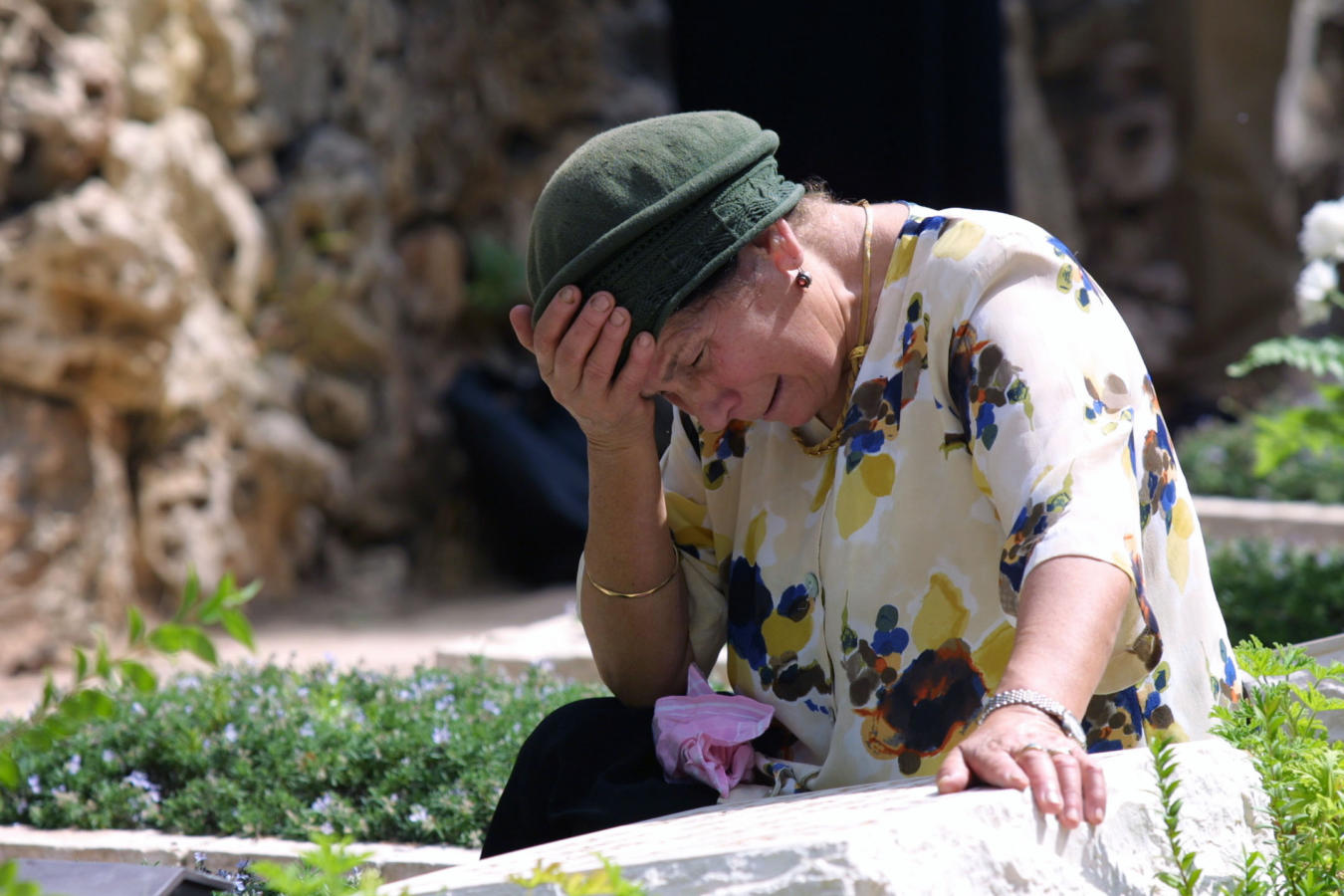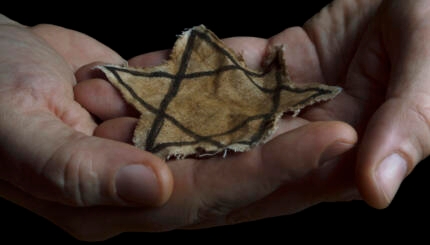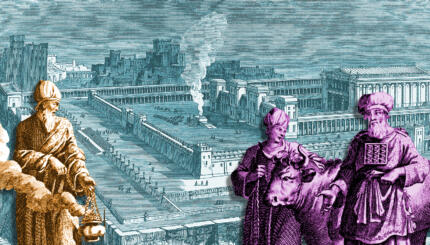The pairing of Israel’s Remembrance and Independence Days–with the end of the first being the start of the second–seems, after half a century, quite natural and has been the subject of much interpretation confirming the significance of the match. The symbiotic connection of mourning and joy is integral to Judaism. The breaking of the glass recalling the destruction of Jerusalem is a central part of the happiest of occasions, the wedding ceremony; on the Ninth of Av–which commemorates that very destruction, the saddest date in the Jewish calendar–the tradition says that the Messiah will be born.
In truth, the decision to put these days back-to-back was neither obvious nor inevitable, and there was serious opposition to it, not all of which has disappeared. At the same time, as noted, this joining has indeed created a dynamic between the two, one commemorating tragedy and loss, the other celebrating national independence. The abrupt transition from private pain to communal joy is a difficult adjustment for many, most particularly, of course, the families of the fallen soldiers.
Israel is unique among modern nations in setting “Memorial Day” contiguous to its Independence Day. The decisions regarding the fixing the date and the “content” of the day (ceremonial, limits on public behavior) were hardly natural or obvious. They reflect tensions within Israel and conflicting systems of values within its society.
Early Commemorations
The need to commemorate those who died fighting for the state was felt early, but it came primarily from “below”–spontaneously, from the families, friends, and neighbors of the dead. They would gather on the yahrzeit (anniversary date of the death), at the graves or at battle sites. Cities, towns, kibbutzim, and moshavim organized communal memorials. The texts and rituals varied from one place to another. No single date seemed compelling around which to unite these private or local ceremonies recalling personal grief.
In the first national celebrations (“Nation Day” in July 1948, Independence Day in 1949) reference to the fallen was included in ceremonies and public declarations; visits were made to cemeteries with government officials and military representatives present. The close causal relation between heroism, sacrifice, and Jewish national rebirth was commonly felt. It was part of the emerging Israeli ethos.
With your help, My Jewish Learning can provide endless opportunities for learning, connection and discovery.
But some, particularly the families of dead soldiers, found this inadequate and troubling. They felt the respect due their lost ones and their own feelings was being subordinated to the festive atmosphere of Independence Day. They demanded a separate date of national tribute to the fallen. A number of alternate dates were considered–including Lag B’Omer and 11 Adar, each of which recalls an instance of Jewish heroism. (The former commemorates the end of the plague on Rabbi Akiba’s students during the ancient revolt against Roman rule, while the latter is the day in 1920 when the Zionist fighter Joseph Trumpeldor, along with seven others, died in the defense of Tel Hai in the northern Galilee.)
The choice of the day before Independence Day was quite “accidental”–following a “separation” of the memorials and the joyous celebrations in 1950 simply because the proper date for Independence Day fell on when mourning would be inappropriate. Prime Minister David Ben-Gurion was among those who found contiguous dates the best solution and was so adamant about it that the opponents did not pursue the debate. Remembrance Day was not anchored in law until 1963, and there was no official central opening ceremony until after the Six Day War (1967), when it was introduced at the Western Wall.
Present Observances Are Not Accepted By Everyone
In 1980 the extended Yom Hazikaron to recall all who have fallen in service to the country or as victims of hostile attack; previously the day had been dedicated only to the fallen soldiers of the 1948 War of Independence. While it is not a “full holiday” (schools, shops, and offices are open), it is marked by sirens in the evening and morning–during which silence is observed and no work or traffic allowed–the lowering of flags to half staff, official visits to cemeteries, ceremonies in schools, the closing of places of entertainment and coffee shops in the evening, and programming “appropriate for the mood of the day” on the television and radio.
The evolution of the mode of observance reveals other tensions within the society. The initial symbols–the blowing of the sirens and official visits to cemeteries–were borrowed from post-World War I European memorial practices. Some secular groups even used a new, specially written “ ” prayer (a memorial service like the one recited on and other religious festivals)–although this Yizkor omitted all references to God and religious ideas. The Zionist (“national”) religious community, a minority, added traditional elements to their ceremony–prayers like El Malei Rahamim (a memorial prayer), Kaddish (the mourner’s prayer), and a more traditional Yizkor–and over time the official ceremonies became a synthesis of the secular, universal and the traditional.
The non-Zionist religious community (the ultra-Orthodox, also called haredim) has ignored Remembrance Day just as it ignores Independence Day. Each year, pictures on television and in newspapers show haredim going about “business as usual” when the sirens are sounded, causing anger amongst the rest of the population.
Mourning as a Nation
The “nationalization” of death and mourning is not an easy matter. Many families of fallen soldiers still feel uncomfortable about strangers and “the multitude” appropriating their loss. The sadness of the masses can never approach the pain the families feel. This discomfort is intensified by the immediate transition into Independence Day and celebration marked by levity.
As one mother said recently: “We never celebrate Yom Ha’atzmaut because we are still recovering from Yom Hazikaron. Joining the days leaves us feeling that many are waiting for Yom Hazikaron to end, so they can go celebrate, which takes away from the respect and meaning of Yom Hazikaron. It leaves the impression of, ‘Well, we did our duty and can forget it for another year’.”
Yet the indications are that the public has, over the years, begun to internalize the individual deaths of thousands into a communal sense of grief/gratitude and the need to express it. On the public level Yom Hazikaron is most deeply felt in the school system, where students and teachers take part in ceremonies and not just for the two minutes during which the siren sounds. Such exposure does have an educational purpose–to create a collective memory, so to speak, and it has helped integrate the children of immigrants into Israeli society in the past and will continue to do so with the recent immigrant populations (Russian and Ethiopian).
Mourning as Individuals
Remembrance Day began as an appendage to Independence Day, with lesser status in both law and the emotions, except, of course, for those personally affected. Over time an interesting process has taken place. Independence Day has lost much of its poignancy. The large majority of Israelis today were born after the state was established; for them it is taken for granted, a sign of national maturity or “normalcy” to some extent.
Individualism is currently more “in” in Israel than nationalism, as is true in much of the Western world, which also weakens the holiday’s force. Yom Hazikaron, on the other hand, has deepened its roots in the public mind. Except for certain specific groups (the haredim, Arabs, etc.) the population as a whole identifies more with the day than it did in the early years. The media have even extended beyond the statutory hours their “serious, appropriate” broadcasting, with personal stories, historical accounts, and discussions. More than half a century into statehood, the fact that Israel still is actively engaged in defending itself and its soldiers and civilians are still being killed and wounded fortifies the communal feeling.
The observance of personal mourning in Judaism lasts for one year, at most. Even the most emotional of persons looses the need or ability, over time, to weep for lost loved ones. Communal mourning is another matter. The Jewish people still grieves for the loss of Jerusalem on Tisha B’Av, almost 2,000 years after the events, even after the rebuilding of the Jewish state. We sit on low benches and remove our shoes as mourners for an event none of us were present at. Communal grief takes over when the community identifies in a fundamental way with the personal losses of its members, even after their personal mourners are no longer around. It is too early to know if Remembrance Day will assume such a place in the spirit of the Jewish people, though conceivably that could happen.



